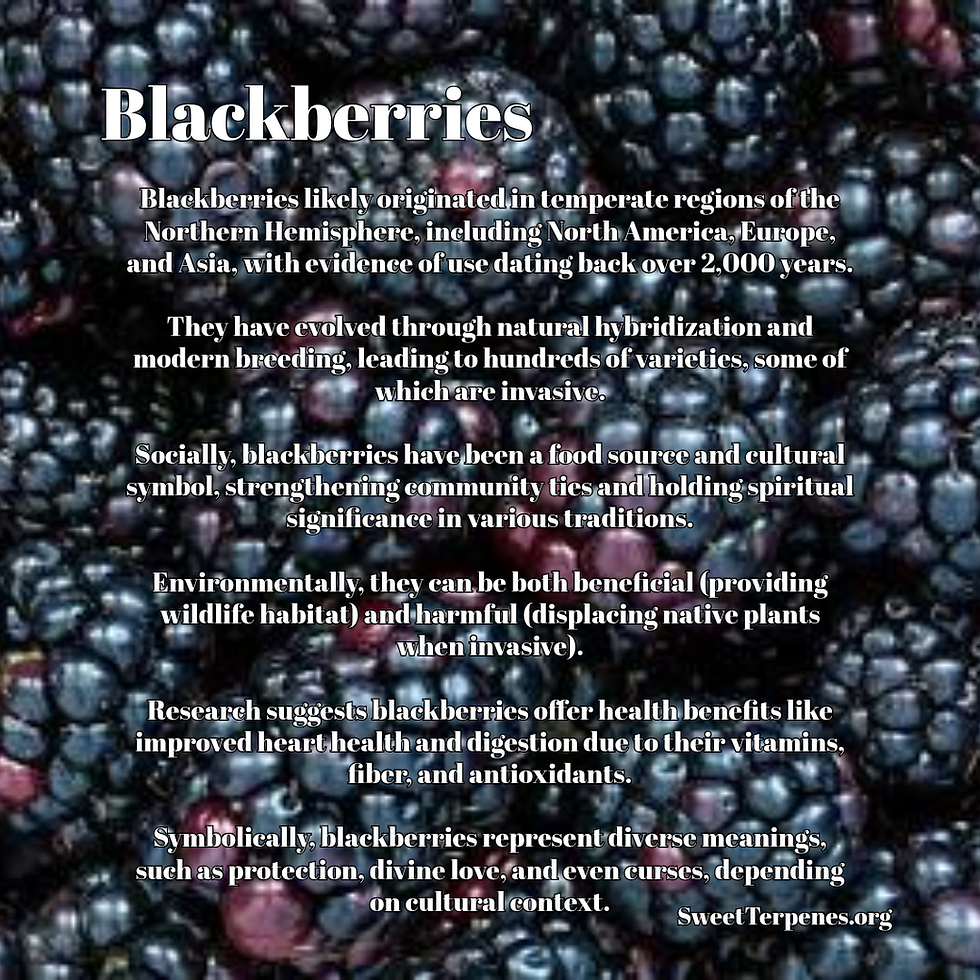Lavender: History, Impact & Symbolism
- Heather Stanley

- Jul 13
- 3 min read
A Comprehensive Survey of Lavender’s Historical and Modern Significance

Lavender, a perennial shrub of the mint family (*Lamiaceae*), has captivated human societies for millennia with its fragrance, versatility, and symbolic depth. This survey explores its origin, evolution, impacts, benefits, uses, and symbolism, drawing from historical records, scientific studies, and cultural narratives to provide a detailed overview.
Origin and Historical Context
Lavender is native to the Old World, particularly the Mediterranean region, including the Iberian Peninsula, Adriatic coast, Balkans, Levant, and coastal North Africa, as well as parts of Eastern and Southern Africa, the Middle East, South Asia, and the Indian subcontinent ([Lavandula - Wikipedia](https://en.wikipedia.org/wiki/Lavandula)).
Its history stretches back approximately 2,500 years, with evidence of use in ancient Egypt for embalming and cosmetics, and in Greece and Rome for medicinal and aromatic purposes. The name "lavender" derives from the Latin "lavare," meaning "to wash," reflecting its use in baths ([History of Lavender - CACHE CREEK LAVENDER] (https://www.cachecreeklavender.com/history-of-lavender.html)).
Evolution of Cultivation and Classification
Initially collected from the wild, lavender’s cultivation began in earnest in the Mediterranean, with significant developments in regions like Provence, France, and England (e.g., Hitchin, dating back to the 1500s) ([Lavender History – Hitchin Lavender](https://hitchinlavender.com/lavender-history/)).
Over time, its classification evolved, with Carl Linnaeus recognizing five species in 1753, and modern taxonomy identifying 39 species across eight sections and three subgenera ([Lavandula - Wikipedia](https://en.wikipedia.org/wiki/Lavandula)).
Hybrids like *Lavandula x intermedia*, discovered in France in the 20th century, have expanded its adaptability to various climates, with cultivation now spanning Europe, Australia, New Zealand, North and South America, and beyond ([History of Lavender - CACHE CREEK LAVENDER](https://www.cachecreeklavender.com/history-of-lavender.html)).

Negative Environmental and Social Impacts
While lavender offers ecological benefits, such as supporting pollinators like bees and butterflies, certain species, notably *L. stoechas*, have been declared invasive in regions like Victoria, Australia, and parts of Spain, potentially disrupting local ecosystems ([Lavender: History, Taxonomy, and Production | NC State Extension](https://newcropsorganics.ces.ncsu.edu/herb/lavender-history-taxonomy-and-production/)).
Health risks include potential allergic reactions, contact dermatitis, and concerns about hormonal effects in young boys, particularly with topical use ([LAVENDER: Overview, Uses, Side Effects, Precautions, Interactions, Dosing and Reviews](https://www.webmd.com/vitamins/ai/ingredientmono-838/lavender)).
Socially, while lavender farming can enhance rural economies through agritourism and local product sales, specific negative impacts, such as labor conditions, are not widely reported. However, sustainable practices are crucial to mitigate potential economic and environmental conflicts, involving local communities in decision-making to ensure harmony ([Southern Grace Lavender Farm in Southport, Florida](https://southerngracelavenderfarm.com/impact-on-the-environment)).

Health Benefits: Scientific Insights
Lavender’s health benefits are well-documented in traditional and modern contexts. Research suggests it reduces anxiety, with a 2005 study showing reduced anxiety in 200 people awaiting dental treatment ([Lavandula - Wikipedia](https://en.wikipedia.org/wiki/Lavandula)).
It also improves sleep quality, with systematic reviews indicating positive effects on mild sleep disturbances ([The Many Wonders of Lavender: What It Can Do for You](https://www.healthline.com/health/what-lavender-can-do-for-you)). Other benefits include pain relief, antimicrobial properties for wound healing, and anti-inflammatory effects, supported by studies on its essential oil ([Lavender: Health benefits and uses](https://www.medicalnewstoday.com/articles/265922)).
However, the FDA does not regulate essential oil quality, and users should consult healthcare providers before use.
Uses: Historical and Contemporary Applications
Lavender’s uses span millennia. In ancient Egypt, it was integral to mummification and incense ([Lavender: History, Taxonomy, and Production | NC State Extension](https://newcropsorganics.ces.ncsu.edu/herb/lavender-history-taxonomy-and-production/)).
Greeks and Romans used it in baths and for medicinal purposes, while medieval Europe saw it as an aphrodisiac and disinfectant ([The History of Lavender — WARWICK FURNACE FARM](https://www.warwickfurnacefarm.com/history-of-lavender)).
Today, it is cultivated for essential oils used in balms, perfumes, and cosmetics, with *L. angustifolia* yielding sweet oil and *L. x intermedia* offering sharper tones ([Lavandula - Wikipedia](https://en.wikipedia.org/wiki/Lavandula)).
Culinary uses include flavoring pastas, salads, and desserts, while dried buds are used in sachets and potpourris ([What’s Cooking America: Lavender](https://whatscookingamerica.net/Lavender.htm)).

Symbology: Cultural and Historical Meanings
Lavender’s symbolism is rich and varied. It represents purity, silence, devotion, serenity, and calmness, with its purple color linked to royalty and elegance ([Lavender Meaning: History, Symbolism, & Facts | Petal Talk](https://www.1800flowers.com/articles/flower-facts/all-about-lavender)).
In ancient times, it was associated with cleansing and protection, used in rituals and baths. In medieval Europe, it symbolized love and loyalty, while in Victorian floriography, it denoted enduring friendship and healing ([10 Spiritual Meanings of Lavender](https://www.mdbiowellness.com/blogs/doctors-desk/10-spiritual-meanings-of-lavender)).
Modernly, the color lavender symbolizes the LGBTQ+ community, reflecting resistance and empowerment, particularly highlighted during events like Pride Month ([Shades of Lavender: Symbolism, Scent, Sightings, and Species | New York Botanical Garden](https://www.nybg.org/planttalk/shades-of-lavender-symbolism-scent-sightings-and-species/)).
Key Citations
- [Lavandula Wikipedia page](https://en.wikipedia.org/wiki/Lavandula)
- [History of Lavender Cache Creek Lavender](https://www.cachecreeklavender.com/history-of-lavender.html)
- [Lavender History Taxonomy Production NC State Extension](https://newcropsorganics.ces.ncsu.edu/herb/lavender-history-taxonomy-and-production/)
- [Lavender Health benefits and uses Medical News Today](https://www.medicalnewstoday.com/articles/265922)
- [What Lavender Can Do for You Healthline](https://www.healthline.com/health/what-lavender-can-do-for-you)
- [All About Lavender Petal Talk](https://www.1800flowers.com/articles/flower-facts/all-about-lavender)
- [Shades of Lavender New York Botanical Garden](https://www.nybg.org/planttalk/shades-of-lavender-symbolism-scent-sightings-and-species/)
- [What’s Cooking America Lavender](https://whatscookingamerica.net/Lavender.htm)
- [LAVENDER Overview Uses Side Effects WebMD](https://www.webmd.com/vitamins/ai/ingredientmono-838/lavender)
- [Southern Grace Lavender Farm Impact Environment](https://southerngracelavenderfarm.com/impact-on-the-environment)
- [The History of Lavender Warwick Furnace Farm](https://www.warwickfurnacefarm.com/history-of-lavender)
- [Lavender History Hitchin Lavender](https://hitchinlavender.com/lavender-history/)
- [10 Spiritual Meanings of Lavender MDBioWellness](https://www.mdbiowellness.com/blogs/doctors-desk/10-spiritual-meanings-of-lavender)
Information generated by Grok:












Comments